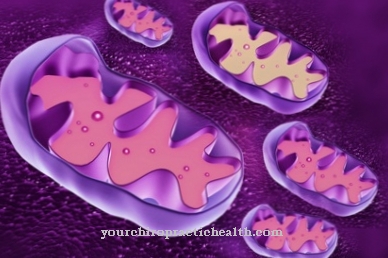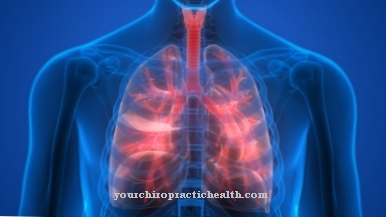Of the Fat film the skin is a chemical, slightly acidic fat-water layer on the surface of the skin, which is made up of the secretions of the sebum and sweat glands. This layer acts like a chemical barrier to pathogens. Skin that is too dry can break this barrier function.
What is the fat film?

The human skin has a natural film of water and fat. This film comes from the skin glands, which can be divided into sebum and sweat glands. They end in exit channels and contractile glandular end pieces on the surface of the skin. Both sweat and sebum and breakdown products of the cornification processes are released from these channels. The secretions of the skin glands form the fatty film on the skin.
Since the beginning of the 20th century, the natural water-fat film is sometimes also called Acid mantle the skin. Even in previous centuries, medical professionals discovered that the entire skin is covered by such an acid layer. In the 20th century, the medic Alfred Marchionini drew new conclusions about the function of this acidic film.
The weakly acidic pH of the skin is between four and seven in humans and, according to Marchionini, is primarily intended to protect the epidermis from pathogens by repelling bacteria. However, since some bacteria can also thrive in a slightly acidic environment, this theory is now under criticism. According to today's science, the antibacterial function of the water-fat film should not be due to the acid content, but to the peptides and lipids contained in the fat film.
Function & task
Several glandular secretions are contained in the natural fat film of the skin. The secretions of the sebum and sweat glands meet in the fat film and differ enormously in their ingredients. In addition to uric acid and water, the final fat film mainly contains electrolytes, urea, peptides and fatty acids.
The most important electrolytes in the human body include salts such as sodium, potassium, calcium or magnesium, which dissociate in an electrical field. Uric acid is found primarily in human sweat and acts as an antioxidant. Urea, in turn, is a detoxifying substance that contains some level of toxic ammonia. Peptides are bacteria-resistant molecules made from amino acids. The fatty acids in turn come from the sebum glands. The most important acids in this context are the omega-3 fatty acids, which are essential components for the skin's moisture balance.
These components are not only excreted to the outside, but are also stored in the horny layer of the skin. Above all, between the individual horny cells there are numerous fats that bind the cells together like mortar. This makes the skin water-repellent and gives it a smooth surface. The skin flora is ideally adapted to the chemical biotope made up of the substances mentioned. This means that the protective germs of your own skin can easily withstand the chemical milieu of the fatty film.
However, the biotope from the specific compounds of the components mentioned often acts as a chemical barrier to other microorganisms. The secretions from the skin glands protect human skin and mucous membranes from the growth of foreign microorganisms. In addition, the fatty film prevents the skin from drying out or cracking. The general resistance and durability of the skin's layers therefore depends not least on the water-fat film of the skin.
Illnesses & ailments
A malfunction of the skin glands can change the composition of the natural fat film on the surface of the skin and manifest itself in various symptoms. Extremely dry skin can, for example, indicate pathological symptoms in connection with the fatty layer. The possible causes of dry skin and thus impaired fat film production are diverse. In addition to metabolic disorders such as diabetes or malfunctioning of the thyroid gland, hormonal disorders can also be considered as a cause.
Under certain circumstances, the patient drinks too little or he follows harmful hygiene rituals. For example, skin care with alkaline products can dry out the skin, as alkaline substances rinse the lipids out of the horny layers. Even eating disorders, alcoholism, and other addictions can change the composition of the natural fatty film on the skin and cause the skin to dry out.
The horny layer in particular still dries out most often from excessive contact with water, cleaning solutions or solvents. Although the fat film can regenerate itself to a certain extent, certain hygiene habits or everyday use of solvents all too often overwhelm the ability to regenerate. In the worst case, the skin's barrier function can weaken. Germs and bacteria now have an easy time colonizing the skin and chemical pollutants are only kept away to a limited extent. Eczema or other skin diseases often develop as part of this.
If such complaints are recognized early enough and the living situation is changed for the sake of the natural fat film, the skin can in most cases regenerate completely. On the other hand, if the harmful habits are pursued, dry skin can turn into an even bigger health problem. In extreme cases, for example, the horny layer of the skin is attacked. Without the natural fat film, there are hardly any fatty acids between the horny cells and the cells no longer hold together ideally. The skin becomes cracked and ailing.








.jpg)



















